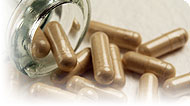Suma
Uses
Parts Used & Where Grown
Suma is a large shrubby vine native to the rain forests of the Amazon and other tropical regions of Latin America, including Brazil, Ecuador, Panama, Peru, and Venezuela.1 The root of the plant is used medicinally.
Traditional Use (May Not Be Supported by Scientific Studies)
Although suma is claimed as an ancient Brazilian folk remedy, no confirmation of that statement is found in the modern literature on medicinal plants. Advocates have claimed suma is an immune enhancer, an adaptogen (helps combat stress), and that it possesses anticancer activities. Test tube studies do indicate possible anti-tumor activity of suma constituents called pfaffosides. Suma has been marketed as Brazilian ginseng, though it is not an adaptogen (a substance that invigorates or strengthens the system) and is not related to Asian ginseng or American ginseng. In light of the lack of known traditional use, and of modern research confirming health benefits, use of suma is not recommended for any condition at this time.2
How It Works
How It Works
Suma root contains several major constituents, including the nortriterpene pfaffic acid, six pfaffic acid saponins (pfaffosides A–F), pterosterone, ecdysterone, and ecdysteroid glycosides.3, 4 Although widespread claims are made for this herb for the treatment of chronic fatigue, stress, menopausal symptoms, and diabetes, they are not supported by current human clinical research. What little research has been done focuses on the plant’s anti-tumor, anti-inflammatory, and aphrodisiac effects and has been completed only in test tubes or with animals.5, 6, 7, 8
How to Use It
Suma root, 500 to 1,000 mg two to three times per day, can be used.9
Interactions
Interactions with Supplements, Foods, & Other Compounds
Interactions with Medicines
Side Effects
Side Effects
Very little is known about the adverse effects of this herb. Saponins, such as the pfaffosides found in this plant, can cause nausea when taken in excessive quantities. Occupational inhalation of suma dust has been known to trigger asthma.10 The safety of this plant has not been established for use during pregnancy or breast-feeding.
References
1. Peirce A. Practical Guide to Natural Medicines. New York: William Morrow and Co., 1999, 614-5.
2. Tyler VE. The Honest Herbal 4th ed. New York: Haworth Press, 1999, 363-5.
3. Nishimoto N, Nakai S, Takagi N, et al. Pfaffosides and nortriterpenoid saponins from Pfaffia paniculata. Phytochem 1984;23:139-42.
4. Nishimoto N, Shiobara Y, Inoue S, et al. Three ecdysteroid glycosides from Pfaffia iresinoids. Phytochem 1988;27:1665-8.
5. Arletti R, Benelli A, Cavazzuti E, et al. Stimulating property of Turnera diffusa and Pfaffia paniculata extracts on the sexual behavior of male rats. Psychopharmacol 1999;143:15-9.
6. Peirce A. Practical Guide to Natural Medicines. New York: William Morrow and Co., 1999, 614-5.
7. Tyler VE. The Honest Herbal 3rd ed. New York: Haworth Press, 1993, 303-4.
8. Mazzanti G, Braghiroli L. Analgesic anti-inflammatory action of Pfaffia paniculata (Martius) kuntze. Phyto Res 1994;8:413-6.
9. Peirce A. Practical Guide to Natural Medicines. New York: William Morrow and Co., 1999, 614-5.
10. Subiza J, Subiza JL, Escribano PM, et al. Occupational asthma caused by Brazil ginseng dust. J Allergy Clin Immunol 1991;88:731-6.
Last Review: 03-18-2015

Copyright © 2024 TraceGains, Inc. All rights reserved.
Learn more about TraceGains, the company.
The information presented by TraceGains is for informational purposes only. It is based on scientific studies (human, animal, or in vitro), clinical experience, or traditional usage as cited in each article. The results reported may not necessarily occur in all individuals. For many of the conditions discussed, treatment with prescription or over the counter medication is also available. Consult your doctor, practitioner, and/or pharmacist for any health problem and before using any supplements or before making any changes in prescribed medications. Information expires December 2024.
This information does not replace the advice of a doctor. Healthwise, Incorporated, disclaims any warranty or liability for your use of this information. Your use of this information means that you agree to the Terms of Use. Learn how we develop our content.

